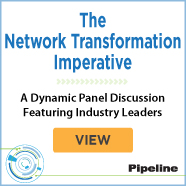Innovating with Trust, Technology, and Confidence

We’re at a new stage of our evolution. The world has fundamentally changed at an unprecedented pace over just a few decades. Those of us who were alive to see this technical revolution unfold firsthand know that it has been quite a remarkable sight to behold.
Before the technical revolution took place, in the Before Times, there were no mobile phones and no internet, and you needed a single computer that filled an entire room to perform simple math calculations. Today, we have more computing power in our pockets than existed at that time. We have virtually the whole volume of recorded human history at our fingertips or the end of a simple voice prompt. We have also achieved the ability to travel throughout our solar system; teleport photons; decode, edit, and reverse engineer the human genome; and unlock quantum mechanics to create supercomputers that exceed human capabilities and, to some degree, our understanding.
We owe these innovations to our ability to harness and build upon technology. If it were not for the devices, networks, data centers, automation, intelligence, and innovators – none of this would be possible today.
The underlying complexity is mind-boggling. Billions of devices and network elements must be connected, managed, and optimized. Various network-transport technologies must seamlessly integrate and flawlessly hurdle data at the speed of light to data centers where it can be stored, processed, analyzed, and returned to devices and dashboards where humans – and now Artificial Intelligence (AI) – can take meaningful actions.
The complexity and scale test our ability to maintain it all. Assets, such as network elements, routinely get stranded. Inefficiencies lead to increased cost and power consumption. Inaccuracies cause delays, degrade service quality, and ultimately lead to failure. This creates an interesting conundrum. If it took technology and people to make the technical revolution possible, yet it has now exceeded what people can effectively and efficiently manage on their own, how can we continue to innovate?
To solve this problem, it will require, once again, the right people armed with the right technology and experience to build confident solutions that network operators can rely on. But it’s going to take more. It’s going to take trust. True collaborations based on relationships encompassing a comprehensive understanding of the network, technologies, and customers’ desired business outcomes. These collaborations also need to occur when digital interactions have replaced most social interactions, the future role of humans has been called into question, and when human relationships may have never mattered more. I’m not saying it will be easy, but it’s necessary to advance and sustain the next level of innovation from here.
Seeing the Light
I recently had the opportunity to meet with the stakeholders at LightRiver to discuss how they are forging trusted collaborations with their customers to overcome these challenges today. LightRiver provides solutions that enable its customers to discover, analyze, and optimize their networks, and these aren’t just any networks. LightRiver’s over 150 customers include most of the world’s leading hyperscale data centers, cloud providers, service providers, and utilities. For LightRiver and its high-stakes customers, success can be the only outcome.
“Our telecom and cloud customers require ‘five-nines’ reliability, which means 99.999% network uptime and just over five minutes of downtime per year, which is appropriate for that use case,” said Mike Jonas, chief executive officer of LightRiver. “But that’s not enough for our utility customers who produce mission-critical energy and power. They often need six-nines network reliability and millisecond accuracy for control for their use case.”
That may not seem like a big difference, but it only allows mere seconds of anomalies or downtime per year, a much higher state of network availability and performance. LightRiver's key is
understanding its customers’ unique needs and building pretested, factory-built networks that perform optimally.
“Every customer is unique,” Walt Paskowski, senior vice president of sales and marketing operations at LightRiver, added. “When working with one of our global telecom customers, for example, their objective was more about overcoming massive network complexity to create an efficient, high-performance network.” Paskowski went on to explain that – by using LightRiver’s NetFLEX, Network Inventory Optimization (nIO), and Prism products – the Tier-1 carrier was able to save over $650M by better utilizing existing and stranded network assets, optimizing circuits, and consolidating hundreds of racks to just dozens to reduce their carbon footprint at the same time.


















